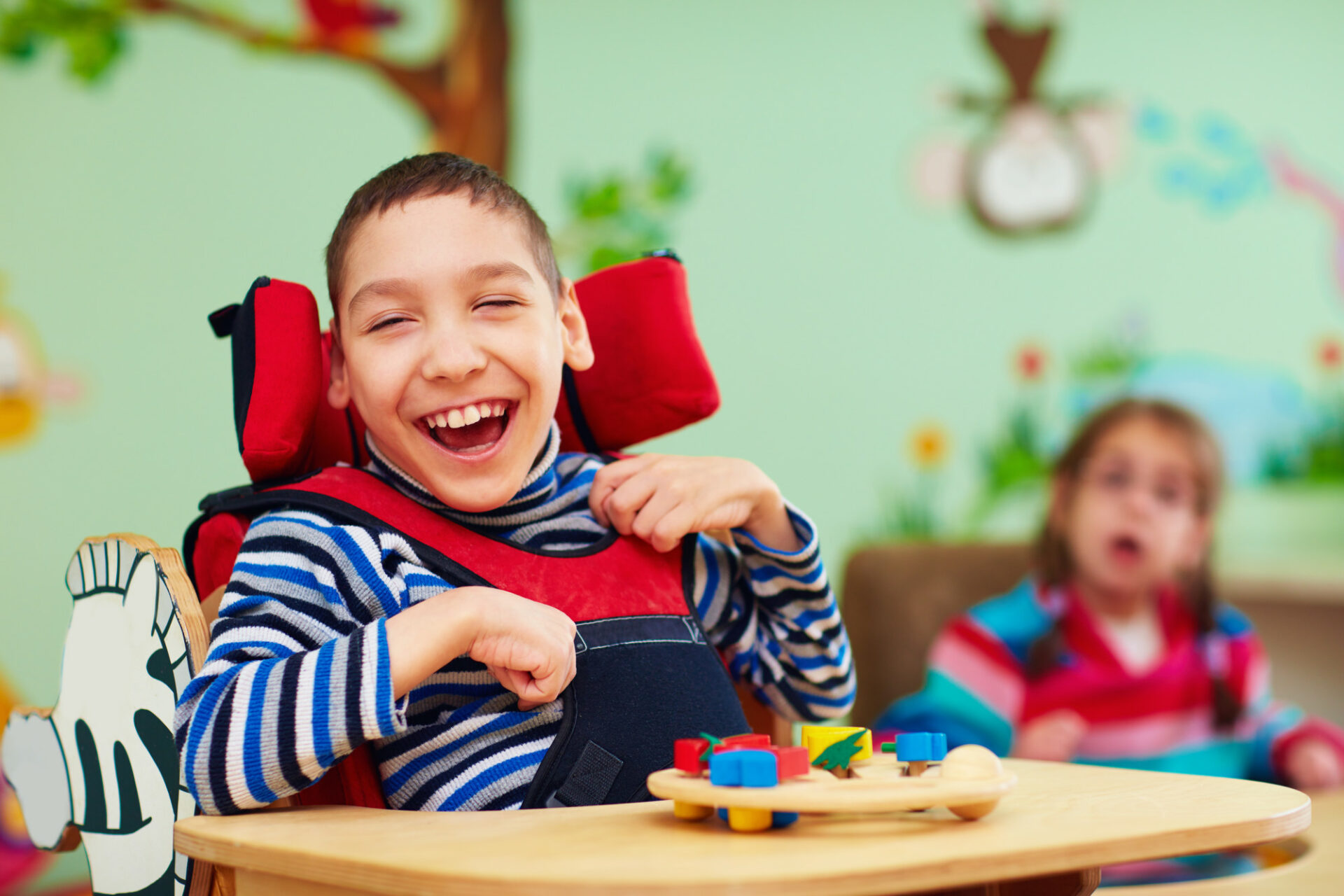Autism and Sensory Processing: Checking Out the Connection and Its Impacts
Autism and Sensory Processing: Checking Out the Connection and Its Impacts
Blog Article
Exploring Autism: Techniques for Reliable Interaction and Communication
Reliable interaction and communication with people on the autism range demand a comprehensive understanding of their distinct needs and preferences. Strategies such as employing clear language, utilizing aesthetic supports, and fostering consistent routines can significantly enhance engagement and lower anxiety. Furthermore, recognizing the importance of non-verbal signs and shared passions leads the method for significant links. However, the details of these strategies disclose additional considerations that merit exploration, specifically in just how they can be adjusted to specific experiences and varied contexts. What might these adjustments appear like in practice?
Understanding Autism Range Disorder
Autism Spectrum Problem (ASD) encompasses a series of neurodevelopmental problems defined by challenges in social interaction, interaction, and repetitive habits. The term "spectrum" shows the varied manifestations and varying levels of severity experienced by individuals with ASD. While some may exhibit considerable problems, others may display high-functioning attributes, enabling higher self-reliance in day-to-day live.
The onset of ASD commonly occurs in early youth, with indicators frequently recognizable by age 2. Very early indicators may consist of delayed speech growth, minimal eye contact, and difficulties in comprehending social signs. Although the specific etiology of ASD remains uncertain, research recommends a combination of hereditary and ecological variables plays an essential function in its development.
Individuals with ASD often possess special staminas, such as increased interest to detail and extraordinary memory skills. However, they may fight with recognizing abstract principles and handling modifications to routine. As a result, interventions and assistance customized to private needs are essential for cultivating interaction and social skills. Recognizing the intricacy of ASD is crucial for promoting awareness, approval, and efficient strategies that help with meaningful communications with people on the spectrum.

Value of Clear Interaction
Effective communication is vital for promoting understanding and link, specifically for individuals with Autism Spectrum Problem (ASD) Clear interaction not only promotes social communications however also enhances the person's capability to express their feelings, needs, and ideas. For people with ASD, the subtleties of language can typically be challenging; consequently, utilizing unambiguous and uncomplicated language is vital.
Moreover, clear interaction assists reduce stress and stress and anxiety that might occur from misconceptions. When messages are communicated in a straight and regular manner, people with ASD are much better geared up to analyze info accurately, which can substantially enhance their social interaction and participation in different setups.
Developing regimens and making use of aesthetic supports can even more boost clear communication. These techniques give individuals with foreseeable structures that aid understanding and retention of details. Additionally, actively being and paying attention client throughout communications advertises a supportive atmosphere where individuals with ASD really feel valued and recognized.
Eventually, focusing on clear communication not only equips people with ASD however additionally promotes even more meaningful connections with their peers, caregivers, and the larger neighborhood, leading the means for comprehensive communications and joint partnerships. - autism
Non-Verbal Communication Strategies
Communication extends past words, and for individuals with Autism Spectrum Condition (ASD), non-verbal signs play a considerable duty in interactions. Non-verbal interaction techniques can consist of facial expressions, gestures, body language, and eye get in touch with, every one of which function as important components for conveying feelings and intentions.
Recognizing and interpreting these non-verbal signals can boost interactions with individuals with ASD. A warm smile or open stance can develop an inviting atmosphere, urging involvement. In a similar way, utilizing visual aids-- such as image cards or signs-- can connect communication voids and assist communicate messages a lot more successfully.
It is additionally crucial to be mindful of individual area, as individuals with ASD might have various convenience levels regarding closeness. Observing their reactions to physical closeness can notify appropriate changes.

Developing Helpful Environments
Developing a helpful environment is crucial for promoting positive interactions and improving the well-being of people with Autism Spectrum Problem (ASD) Such atmospheres can considerably minimize anxiety and develop a sense of safety, enabling individuals to reveal themselves more openly.
To achieve this, it is vital to think about sensory sensitivities that people with ASD may experience. Changing the physical space to include soft lights, marginal background sound, and comfortable seating can develop a calming ambience. Additionally, using regular routines and clear visual timetables can help people prepare for transitions and minimize uncertainty, more promoting comfort.
Social areas need to be structured to reduce frustrating stimulations while offering chances for engagement in favored tasks. Facilitating areas assigned for silent time can also work as a sanctuary during moments of anxiety. Notably, incorporating aspects of option encourages people, allowing them to work out firm in their setting.
:max_bytes(150000):strip_icc()/VWH-JoulesGarcia-AutismInclusionInRecreation-4000x2700-7a106beab91a45438f9590f2460ba5ea.png)
Encouraging Social Communications
Promoting social communications among individuals with Autism Range Condition (ASD) calls for deliberate approaches that prioritize convenience and engagement. Developing foreseeable regimens can assist lower stress and anxiety, making social setups more friendly. Developing structured atmospheres with specified duties and roles enables people to involve without the overwhelming pressure of disorganized social characteristics.
Including interests dig this and staminas right into social tasks can function as a driver for communication. For instance, organizing group tasks around shared hobbies or topics of attraction can promote natural conversations and connections. Additionally, using visual assistances, such as photographic routines or social manuscripts, can assist in recognizing social signs click for more info and assumptions.
Designing ideal social behaviors is vital - autism. Grownups and peers need to show reliable interaction strategies, consisting of active listening and turn-taking. Role-playing situations can likewise supply a safe room for people to exercise these skills
Finally, promoting peer partnerships through inclusive practices is essential. Encouraging comprehensive playdates or team trips can produce chances for socialization in a comfortable setup. By applying these caregivers, instructors and approaches can considerably enhance social communications for individuals with ASD, promoting their total social advancement and well-being.
Final Thought
In verdict, efficient interaction and interaction strategies are crucial for supporting people with Autism Spectrum Problem. Emphasizing clear language, including non-verbal cues, and establishing foreseeable routines substantially enhance interaction and reduce stress and anxiety. Developing supportive settings fosters safe social interactions, while encouraging shared rate of interests facilitates purposeful connections. Eventually, these methods encourage people with autism to navigate social landscapes, promoting their general wellness wikipedia reference and making it possible for the development of long lasting connections.
Effective communication and communication with people on the autism spectrum necessitate a detailed understanding of their unique demands and preferences. Clear communication not only promotes social interactions however additionally improves the person's ability to express their ideas, emotions, and needs.Promoting social interactions amongst individuals with Autism Spectrum Disorder (ASD) calls for willful strategies that focus on comfort and interaction. By carrying out these caregivers, educators and approaches can significantly boost social interactions for individuals with ASD, advertising their overall social growth and wellness.
In conclusion, reliable communication and interaction approaches are necessary for sustaining people with Autism Spectrum Problem.
Report this page